National
Trudeau’s $9 Million Condo Scandal: Elites Party in New York While Canadians Struggle at Home
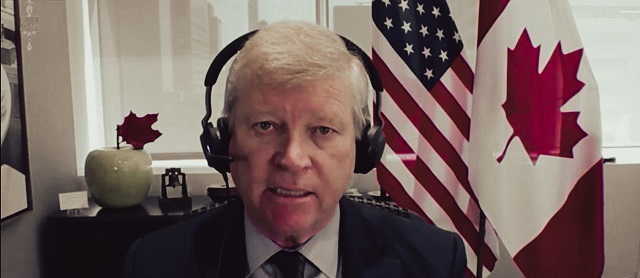
From The Opposition News Network
By Dan Knight
It’s no secret that Justin Trudeau and his Liberal cronies love to live large. But this latest scandal? It’s a new low, even for them. We’re talking about a $9 million luxury condo—yes, you heard that right—on Billionaire’s Row in New York City, bought for a Trudeau-appointed diplomat while millions of Canadians are barely scraping by.
What’s worse? Trudeau himself seems to be right at the heart of this.
Let’s break down the facts that emerged during Meeting No. 137 of the Standing Committee on Government Operations and Estimates (OGGO), and you’ll see exactly how Trudeau’s government, under the watchful eye of his loyal minister Mélanie Jolie, pulled this off.
The Timeline of Trudeau’s Elitist Condo Scheme:
1. February 2023: Tom Clark, a former journalist and long-time friend of the Liberal elites, is appointed by Trudeau’s government as Consul General in New York. A cozy appointment, no doubt, for someone with deep ties to the Liberal establishment.
2. April 27, 2023: The Prime Minister himself—yes, Justin Trudeau—drops by Clark’s old New York residence for a dinner. Imagine the wine flowing and the conversation going, all while the rest of Canada is dealing with a collapsing economy, skyrocketing inflation, and an ongoing housing crisis.
3. April 28, 2023: The very next day, Trudeau and Clark are seen together in a motorcade cruising the streets of New York City. What exactly were they discussing? A new condo perhaps? It’s hard to believe that this kind of luxury real estate plan wasn’t at least mentioned during their cozy ride.
4. Spring/Summer 2023: Global Affairs Canada—overseen by Trudeau’s trusted Minister Jolie—suddenly identifies problems with the old residence. That’s right, just a few months after Trudeau’s visit, the decision is made to start looking for a new, more luxurious residence. Coincidence? Hardly.
5. April 17, 2024: An email from Global Affairs states that Tom Clark was instrumental in giving the green light for the purchase of the $9 million condo. The deal is pushed through, and the taxpayer is stuck with the bill.
6. July 12, 2024: The media finally breaks the story about the purchase of the $9 million luxury condo on Billionaire’s Row, one of the most expensive neighborhoods in New York. Public outrage begins to grow as details about this opulent purchase come to light.
7. July 25, 2024: A bogus correction is issued by Global Affairs, claiming that Tom Clark was not involved in the purchase. Conveniently, this correction comes one day after this very committee ordered documents on Clark’s involvement. Sound fishy? It should.
Clark’s Cozy Deal and Trudeau’s Role
Here’s what we know: Trudeau’s government made a $9 million purchase for Tom Clark, a man with deep ties to the Liberals, shortly after Trudeau himself visited Clark’s old residence. Now, emails show Clark was directly involved in the decision to buy the new place, but when he appeared before the committee, he suddenly couldn’t remember any involvement. Instead, he passed the blame onto Global Affairs Canada.
Now, here’s where it gets worse. Documents show that Clark was instrumental in the decision to buy this opulent residence. Emails from within Minister Mélanie Joly’s own department reveal that Clark himself gave the “green light” on the purchase. But when Clark appeared before the committee, he suddenly had a case of selective amnesia, denying any involvement in the decision. According to him, it was all Global Affairs Canada’s doing. He claims he was just an innocent bystander, touring the property “out of curiosity.”
Are we really supposed to believe that? This is a man who, for decades, worked in media and is well-versed in how power operates. The idea that Clark wasn’t aware of the optics or didn’t say a word when shown this mansion is laughable. What’s even more convenient is that a “correction” from Global Affairs magically appeared one day after the committee requested documents about Clark’s involvement. They want us to believe that all of this is just a coincidence, a bureaucratic hiccup. Sure.
But let’s not forget who runs Global Affairs—none other than Minister Mélanie Jolie, one of Trudeau’s closest allies. Jolie has twice appointed Clark to key roles: once as head of an advisory committee recommending appointments to CBC, and then again as Consul General in New York. And it’s Jolie’s department that now seems to be covering for Clark in this scandal, issuing a correction that conveniently contradicts their own internal emails.
So, who’s responsible? The buck stops with Minister Jolie—and ultimately with Justin Trudeau.
The Real Problem: Trudeau’s Elitism and Out-of-Touch Government
While Tom Clark is now enjoying his luxurious $9 million condo—complete with swimming lanes, golf simulators, and some of the most expensive appliances money can buy—ordinary Canadians are lining up at food banks, barely making rent, and trying to survive in Trudeau’s broken economy.
Let’s break down just how absurd this situation is: for this $9 million palace, Clark pays a laughable $1,800 a month. Meanwhile, the actual cost of living in a place like that? Around $42,000 a month. The difference? You, the Canadian taxpayer, are picking up the tab for Clark’s personal playground while you struggle to pay your bills.
And let’s be clear: Clark wasn’t some innocent bystander in this. He toured the condo, saw the luxury, and didn’t once think to say, “Hey, maybe this is too much, especially when people back home can’t even afford to live.” Why? Because this is the Trudeau mindset. The elites deserve the best, and the rest of us? We can pay for it.
Why Jolie Must Testify
This scandal goes straight to the top. Mélanie Jolie must come before the committee and explain how her department managed to spend $9 million on a condo for one of Trudeau’s buddies. She needs to answer for the emails that say Clark was involved, even though they’re now trying to claim he wasn’t. And, most of all, she needs to explain why this government continues to indulge its inner circle while Canadians suffer.
It’s time for real accountability. Trudeau and his ministers cannot continue to dodge these scandals, pretending like they have no part in the decisions being made. Minister Jolie needs to testify, and the Canadian public deserves answers. After all, you’re the ones paying for it.
This isn’t just about one condo; it’s about a government that’s lost touch with reality, that believes it can spend your money however it likes, with no consequences. The Liberals claim to care about the middle class, but when it comes down to it, they’re more interested in living large—and making sure their friends do too.
Minister Jolie, it’s time to step up and explain why you let this happen. Canadians are watching.
You can subscribe for free to The Opposition with Dan Knight, but for the full experience, you’ll need to upgrade your subscription.
Business
Chrystia Freeland Didn’t Leave Power. She Just Took It Somewhere Else

Canadians were told freezing bank accounts was “necessary.” We were told sending billions overseas without a vote was “solidarity.” And now we’re told that Chrystia Freeland the architect of some of the most aggressive financial overreach in modern Canadian history advising a foreign government on economic policy is “normal.” It isn’t. It’s a closed circle of power rewarding itself, while ordinary Canadians are expected to forget what was done to them and quietly foot the bill.
I don’t believe in coincidences in politics and I don’t believe in “honourary” appointments when billions of dollars and unchecked power are involved. So when Chrystia Freeland, the same woman who helped freeze Canadians’ bank accounts, torched public trust, and oversaw economic decisions that hollowed out this country is suddenly appointed as an economic adviser to Ukraine, Canadians should stop and ask a very uncomfortable question.
Kelsi Sheren is a reader-supported publication.
To receive new posts and support my work, consider becoming a free or paid subscriber.
Who exactly is Chrystia serving? Because it doesn’t look like us and doesn’t feel like us at all. I’m going to make something very clear and spell it out for Canadians… this is the same elite just moved to a different country.
Chrystia Freeland did not leave politics because she failed. She didn’t resign because she was rejected. She exited after years of consolidating power at the highest levels of government and immediately landed an advisory role with a foreign head of state.
That is not a fall from grace. That is a lateral move inside the same elite ecosystem.
Multiple Canadian outlets have now confirmed that Freeland has been named an economic adviser to Ukrainian President Zelenskyy. This is not symbolic. This is not charity. This is about economic reconstruction, international financing, sanctions, and the movement of billions of dollars, much of it, if not all of it is Western taxpayer money.
Including ours.
Has everyone forgotten what this women did to Canadians?? Before anyone starts calling this “statesmanship,” let’s remember the record.
Chrystia Freeland was a central figure during one of the most dangerous moments in modern Canadian governance: the normalization of financial punishment against citizens.
Under her watch, the federal government froze bank accounts without criminal charges, without due process, and without judicial oversight. Whatever your view of the Freedom Convoy, that precedent should have terrified you and if it doesn’t you need to wake up.
Once a government proves it can financially erase you for dissent, it never unlearns that lesson.
She also presided over years of reckless spending, inflationary pressure, and policies that pushed Canadians into a cost-of-living crisis while telling them everything was fine. Housing exploded. Food prices surged. Small businesses collapsed.
And now — suddenly — she’s being handed influence over another country’s economic future? The money no one voted on is now gone with no recourse and she knows it.
Canada has already sent billions of dollars to Ukraine, including roughly $2.5 billion tied to frozen Russian assets — without any direct vote from Canadians and with minimal parliamentary scrutiny.
Let that sit for a minute.
Our government helped set a precedent where foreign sovereign assets are frozen, leveraged, and redirected — and now one of the architects of that approach is advising the very government receiving the funds.
You don’t need to be a lawyer to understand how rotten that looks. At minimum, this is a conflict of interest. At worst, it’s a closed-loop system where the same political actors make the rules, move the money, and then step into advisory roles on the receiving end.
That’s not democracy. That’s managed power. People will say, “Ukraine needs help rebuilding.” Fine. That’s not the argument. The argument is who decides, who benefits, and who is accountable.
Chrystia Freeland still carries enormous influence inside Canada’s political and financial institutions. Her appointment creates a pipeline — informal, opaque, and unaccountable between Canadian decision-makers and a foreign government dependent on Western funds.
If an average Canadian MP took a paid or unpaid advisory role with a foreign government, alarms would be ringing, but when it’s Chrystia Freeland, we’re told it’s noble. Necessary. Above criticism.
That’s how corruption survives. Not through secrecy, but through normalization.
Canadians are always last, here’s the pattern Canadians are starting to see clearly, I hope. Canadians are being forced to tighten their belts. Canadians lose purchasing power on almost everything and Canadians are told to accept less and the sad part is Canadians are good with this.
Meanwhile, political elites move effortlessly between governments, NGOs, global institutions, and advisory boards. All it is, is different flags. Same class of people.
The people who suffered under Freeland’s economic policies don’t get to resign into prestige. They get debt. They get anxiety. They get silence.
She gets influence.
In case your wondering, this isn’t really about Ukraine, this is not an attack on Ukraine or its people. This is about Canadian democracy, accountability, and the dangerous precedent being set when unelected influence replaces public consent.
If Canadians are expected to fund wars, reconstruction, and foreign policy projects — then Canadians deserve transparency, debate, and representation.
Instead, we’re getting appointments behind closed doors and press releases that assume we won’t ask questions.
That era is long over.
Chrystia Freeland didn’t disappear. She didn’t retreat. She repositioned.
If Canadians don’t start calling this what it is — elite continuity without consent — then we shouldn’t be surprised when the same tactics used against citizens at home are exported abroad.
Power always practices somewhere first.
KELSI SHEREN
– – – – – – – – – – – –
One Time Donation! – Paypal – https://paypal.me/
Buy me a coffee! – https://buymeacoffee.com/
Let’s connect!
Youtube – https://www.youtube.com/@
Instagram: https://www.instagram.com/
Substack: https://substack.com/@
TikTok – https://x.com/KelsiBurns
Energy
The global math: Why exporting Canadian energy is a climate win
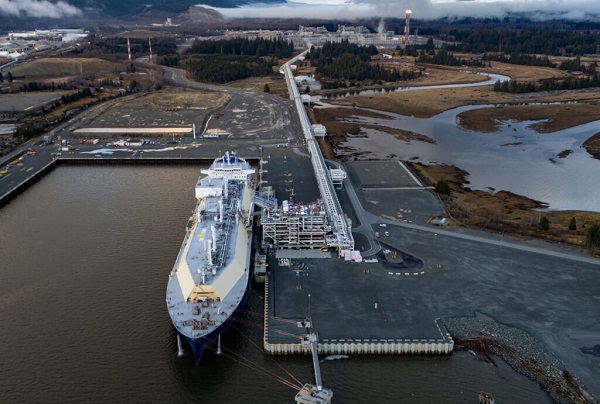
From Resource Works
New report finds that displacing coal and foreign gas with Canadian LNG could lower global emissions by 70 megatonnes a year
Canada’s energy policy debate has become trapped in a polarization that feels dangerously disconnected from global reality.
On one side, we have a domestic conversation focused intensely on our own emissions ledger—counting every tonne produced within our borders as a liability. On the other side is the global reality: a world hungry for energy, often turning to the dirtiest sources available to keep the lights on and economies growing.
I’ve long argued that we cannot solve a global problem like climate change by wearing blinders that restrict our view to the 49th parallel. Recently, on the Power Struggle podcast, I sat down with Mark Cameron to discuss the hard data that backs this up.
Cameron is a fellow at the Public Policy Forum and the co-author of a new report Refuel: What Canadian LNG and Oil Exports Could Mean for Global Emissions. The numbers tell a story that might surprise those who view energy exports solely as a climate negative.
Flipping the script on emissions
The central finding of the Refuel report challenges the orthodoxy that “more production equals more pollution.” When we look at the global picture, the opposite appears to be true.
“The headline news is that if Canada was to increase its LNG exports by [47 million tonnes a year] and if we are exporting primarily into Asian markets, there would be a net reduction in emissions of about 40 to 70 megatonnes per year,” Cameron told me.
Let that sink in. By increasing our economic output and shipping more product abroad, we could lower global emissions by an amount roughly equivalent to taking millions of cars off the road.
It comes down to displacement. The energy we export doesn’t vanish into a void; it replaces other, often dirtier, forms of power generation.
“In some of those markets, you’re displacing coal,” Cameron explained. “Coal obviously is about twice the emissions in generating electricity as LNG. So to the extent that you’re displacing coal, you’re getting a clear emissions reduction.”
The Canadian advantage
This isn’t just about the inherent chemistry of gas versus coal. It is also about the specific quality of the gas produced in Western Canada. Not all liquefied natural gas (LNG) is created equal.
Canada’s geography and technology provide a distinct edge over competitors regarding carbon intensity.
“Canadian LNG, because it has cooler temperatures, shorter shipping times to Asia, more electric drive in its production, is actually about 35 per cent lower in emissions than LNG that would be shipped from, say, the U.S. Gulf Coast,” Cameron said.
When we debate blocking a Canadian project, we act as if the alternative is zero consumption. But the alternative is often gas from the Gulf Coast—which requires more energy to cool in the hot southern climate and takes longer to ship—or worse, coal.
Asian markets know this. They are looking for reliability and lower carbon intensity.
“We want to have a certain percentage of LNG, and we want a certain percentage of that coming from Canada because it’s a stable market and it has a particularly low emissions intensity,” Cameron noted.
The reality of substitution
This brings us to the concept of “carbon leakage.” It is a harsh economic reality that if Canada steps out of the market, we don’t save the planet—we simply cede market share to those with lower environmental standards.
“If the LNG is not coming from Canada, it’s going to come from somewhere else,” Cameron said bluntly. “It’s going to come from the U.S. or Qatar or Australia, or it would be displaced by coal or another energy source. So when you look at all those things in balance, it does look like Canadian LNG is a net positive for the climate.”
Progress in the oilsands
While LNG often dominates the “transition fuel” conversation, the report also addresses the oilsands. The narrative there has often ignored massive strides in efficiency.
“That emissions intensity is coming down. It’s come down by about 30 per cent in the last 20 years,” Cameron said.
He pointed to operational fuel switching as a key driver of this progress.
“Canadian oilsands was using petroleum coke, essentially coal, to generate the steam for the oilsands production. That is almost entirely shifted to natural gas.”
The long game
Finally, we must address the timeline. Critics argue that building LNG infrastructure locks us into fossil fuels. But the transition is a decades-long process.
“There is going to be LNG demand,” Cameron said. “We don’t know exactly how much, but there’s going to be LNG demand for the next four or five, six decades.”
Furthermore, natural gas is a fundamental building block of modern civilization, used for fertilizer and chemical production, not just electricity.
“If we can produce the cleanest LNG in the world, we’re actually doing global climate a favour by building those projects,” Cameron added.
If we retreat from the world stage, we aren’t taking the moral high ground; we are merely outsourcing the emissions to countries with a heavier carbon footprint. A Canada that exports more is a Canada that contributes to a cleaner world.
Watch the video on Power Struggle
- Power Struggle audio and transcript
- Mark Cameron on LinkedIn
- Stewart Muir on X
- Stewart Muir on LinkedIn
Power Struggle on social media:
-
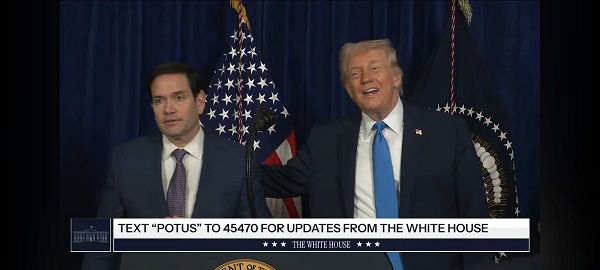
 Daily Caller2 days ago
Daily Caller2 days agoTrump Says US Going To Run Venezuela After Nabbing Maduro
-
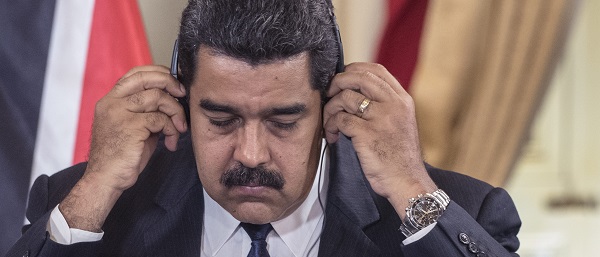
 Daily Caller2 days ago
Daily Caller2 days agoScathing Indictment Claims Nicolás Maduro Orchestrated Drug-Fueled ‘Culture Of Corruption’ Which Plagued Entire Region
-

 Business2 days ago
Business2 days agoVirtue-signalling devotion to reconciliation will not end well
-
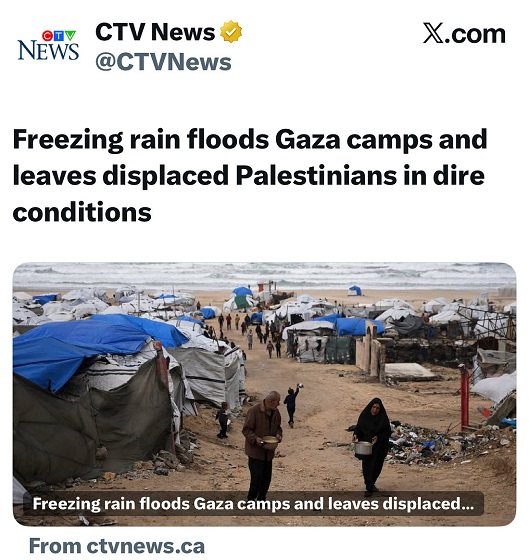
 Opinion1 day ago
Opinion1 day agoHell freezes over, CTV’s fabrication of fake news and our 2026 forecast is still searching for sunshine
-

 International5 hours ago
International5 hours agoNetwork of Nonprofits with Marxist and CCP Ties, and Elected Socialists Race to Counter Washington’s Narrative of the Maduro Raid
-
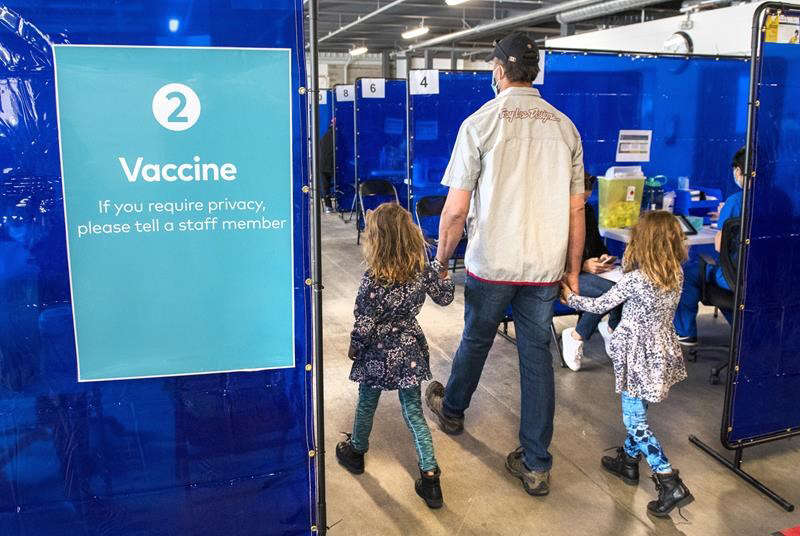
 COVID-191 day ago
COVID-191 day agoA new study proves, yet again, that the mRNA Covid jabs should NEVER have been approved for young people.
-
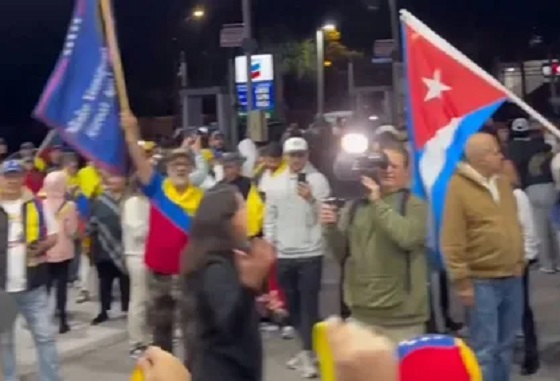
 International1 day ago
International1 day ago“History in the making”: Venezuelans in Florida flood streets after Maduro’s capture
-

 Daily Caller4 hours ago
Daily Caller4 hours agoMinnesota Governor resigns from re-election campaign as massive government frauds revealed











